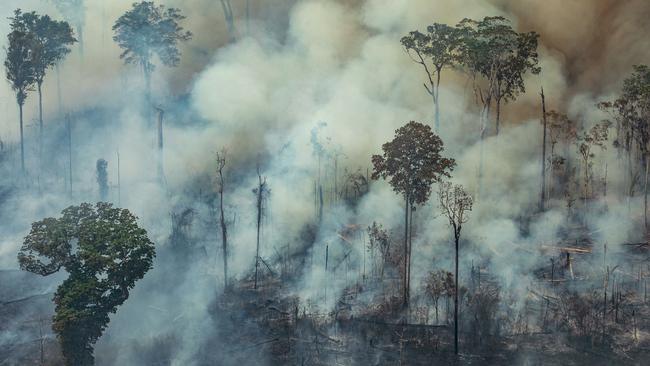Effects of climate change are increasing, according to United Nations’ weather agency
Sea-level rise, ice loss, extreme weather are increasing, according to the United Nations.

Sea-level rise, ice loss, extreme weather and other effects of climate change are increasing, according to the United Nations’ weather agency.
The period from 2015 to the end of 2019 is likely to be the warmest five-year period on record globally, the World Meteorological Organisation said in a report issued to coincide with a UN climate summit in New York this week.
About 75 countries are expected to make new pledges to cut greenhouse gas emissions at the meeting but some of the biggest emitters, including the United States, China, India and the European Union, are unlikely to make significant new commitments.
Average global temperature between 2015-2019 is on track to be the hottest of any five-year period on record, according to the report. The agency said that the global average temperature had increased by 1.1C since the pre-industrial period and by 0.2C compared with 2011-15. Countries would need to commit to a five-fold collective increase in their targets to reduce emissions to meet the goal set under the Paris agreement of limiting global warming to 1.5C, the report said.
The average annual increase in sea levels rose from 3mm between 1997 and 2006 to 4mm in 2007-16. The amount of sea ice in the Arctic in summer has fallen by 12 per cent per decade during the past 40 years.
Last year there was the largest number of tropical cyclones of any year since 2000 and large parts of Africa, central America, Brazil, the Caribbean and Australia have experienced more frequent droughts since 2015.
The report said that there was “still no sign of a peak in global emissions”, with an increase in the burning of fossil fuels globally causing carbon dioxide emissions to rise by 2 per cent last year. The annual increase in energy consumption is outstripping the growth in production of renewable energy, it said.
In 2018, global carbon dioxide was 407.8 parts per million (ppm), 2.2 ppm higher than 2017 and set to reach or exceed 410ppm by 2019.
“The last time Earth’s atmosphere contained 400 parts per million CO 2 was about 3-5 million years ago,” the report said. At that time, global mean surface temperatures were two-to-three degrees Celsius warmer, ice sheets at both poles had melted, and seas were 10 to 20 meters higher.

“Climate change causes and impacts are increasing rather than slowing down,” Petteri Taalas, secretary-general of the WMO, said.
“Sea level rise has accelerated and we are concerned that an abrupt decline in the Antarctic and Greenland ice sheets, whichwill exacerbate future rise.
“As we have seen this year with tragic effect in the Bahamas and Mozambique, sea level rise andintense tropical storms led to humanitarian and economic catastrophes.”
The challenges “are immense”, he said, and warned there was a growing need to adapt to the changing climate as well as reducing greenhouse gas emissions, particularly from energy production, industry and transport.
Brian Hoskins, professor of meteorology at the University of Reading, said that the public should recognise the importance of the global “climate strike” youth movement, adding: “We should listen to the loud cry coming from the school children.”
THE TIMES



To join the conversation, please log in. Don't have an account? Register
Join the conversation, you are commenting as Logout